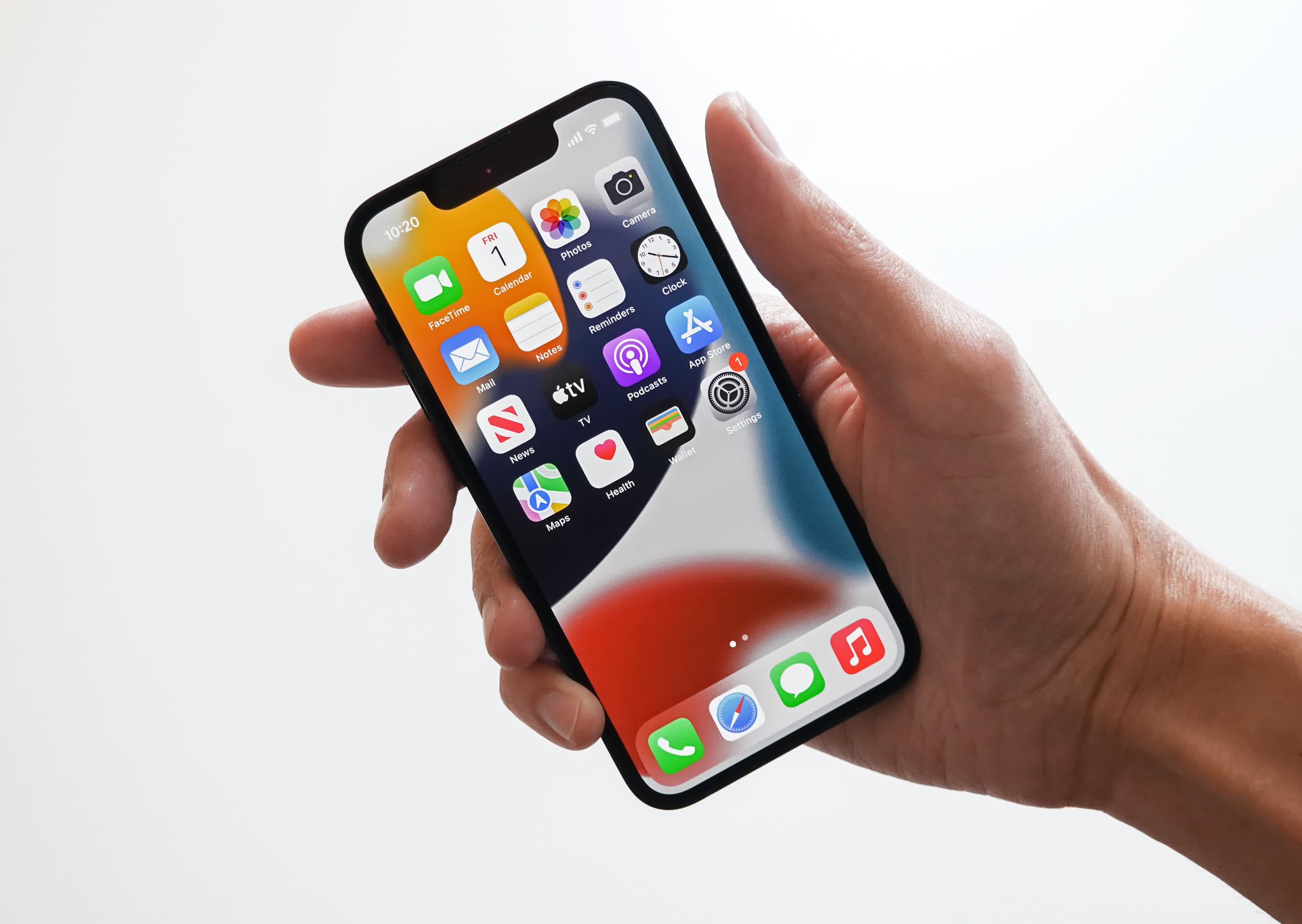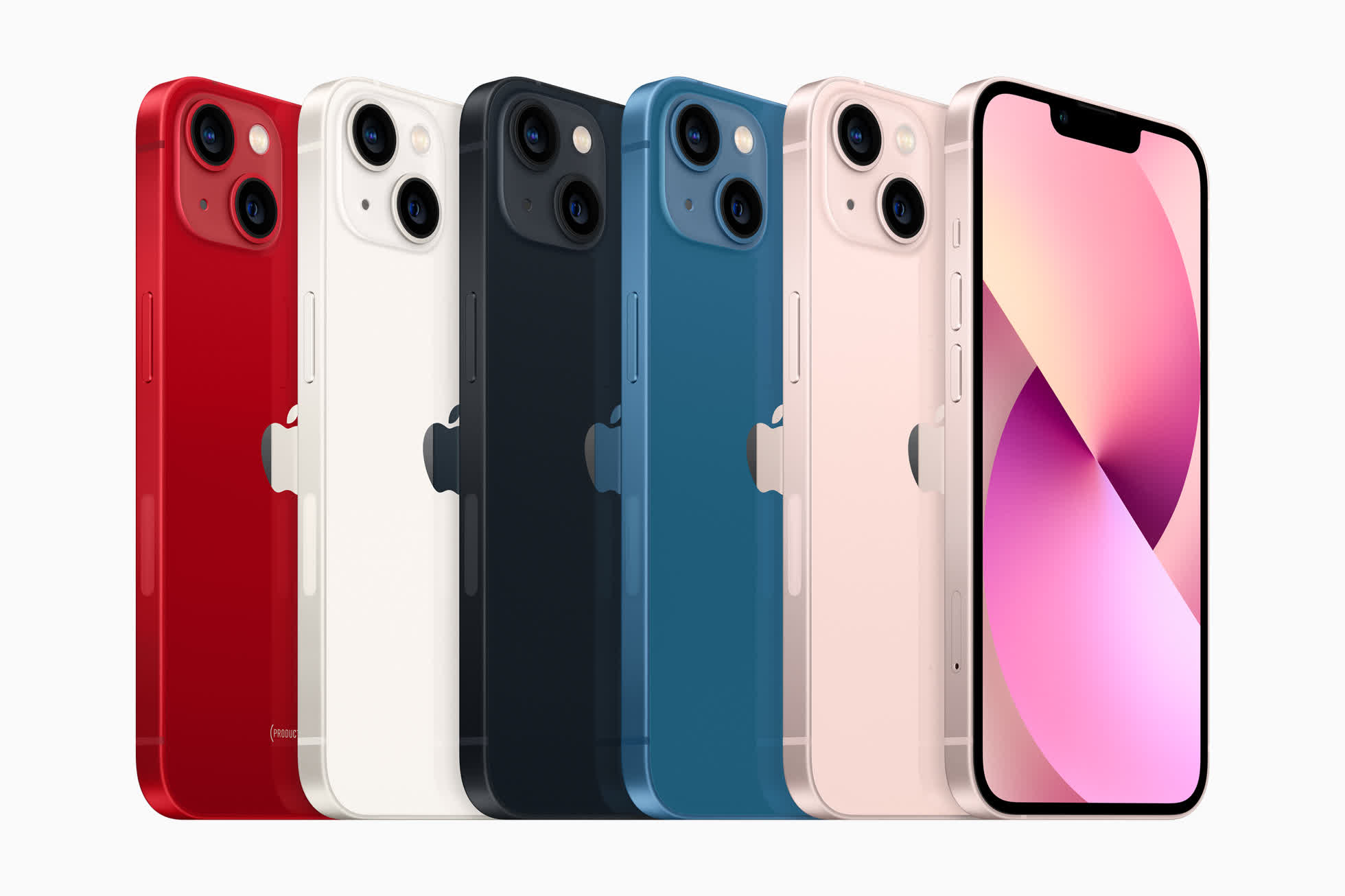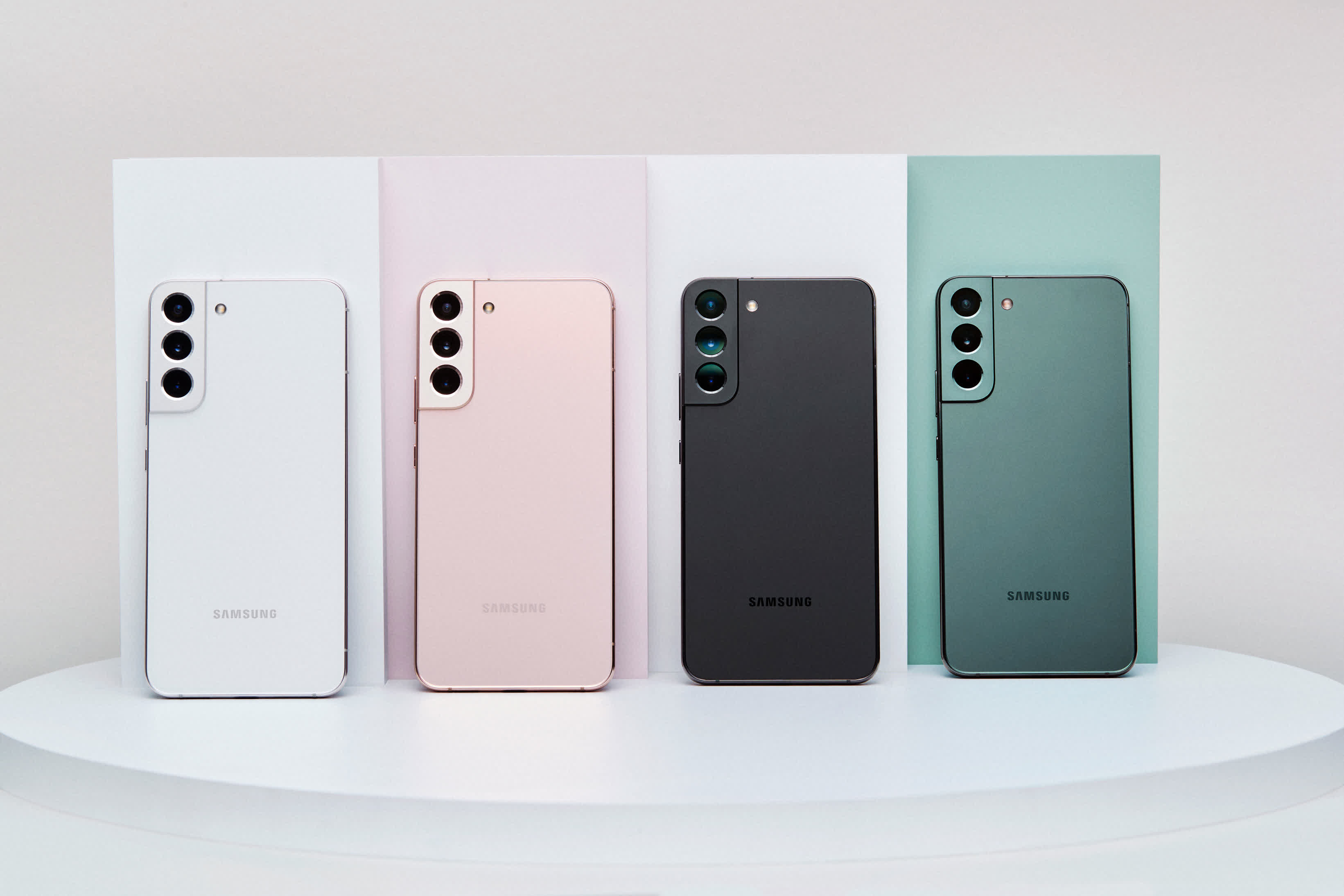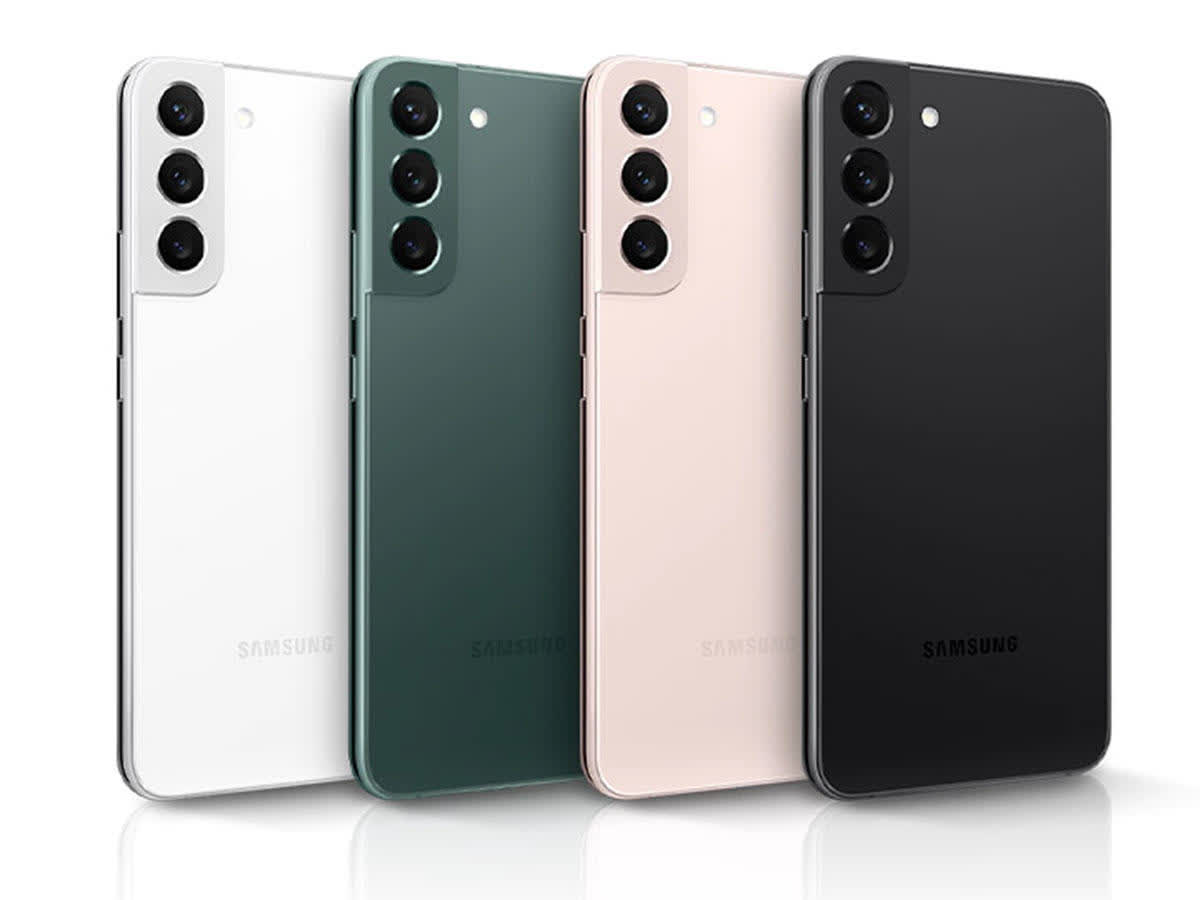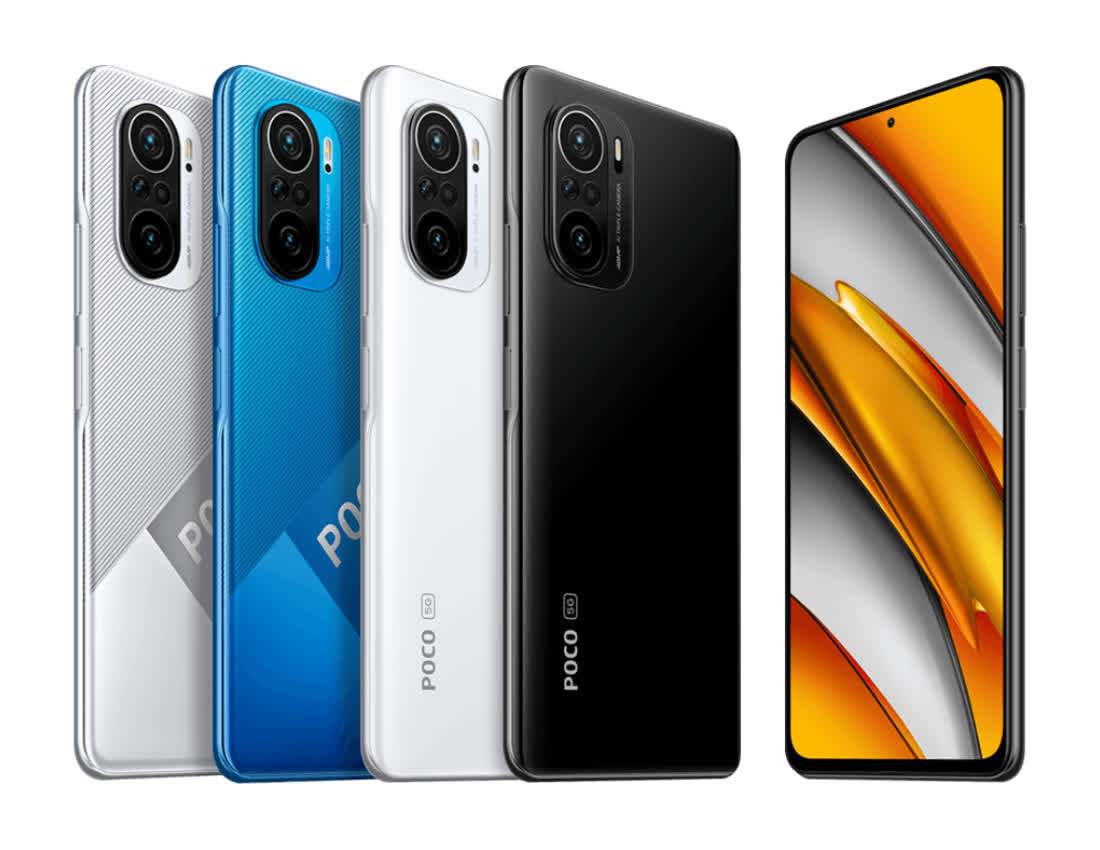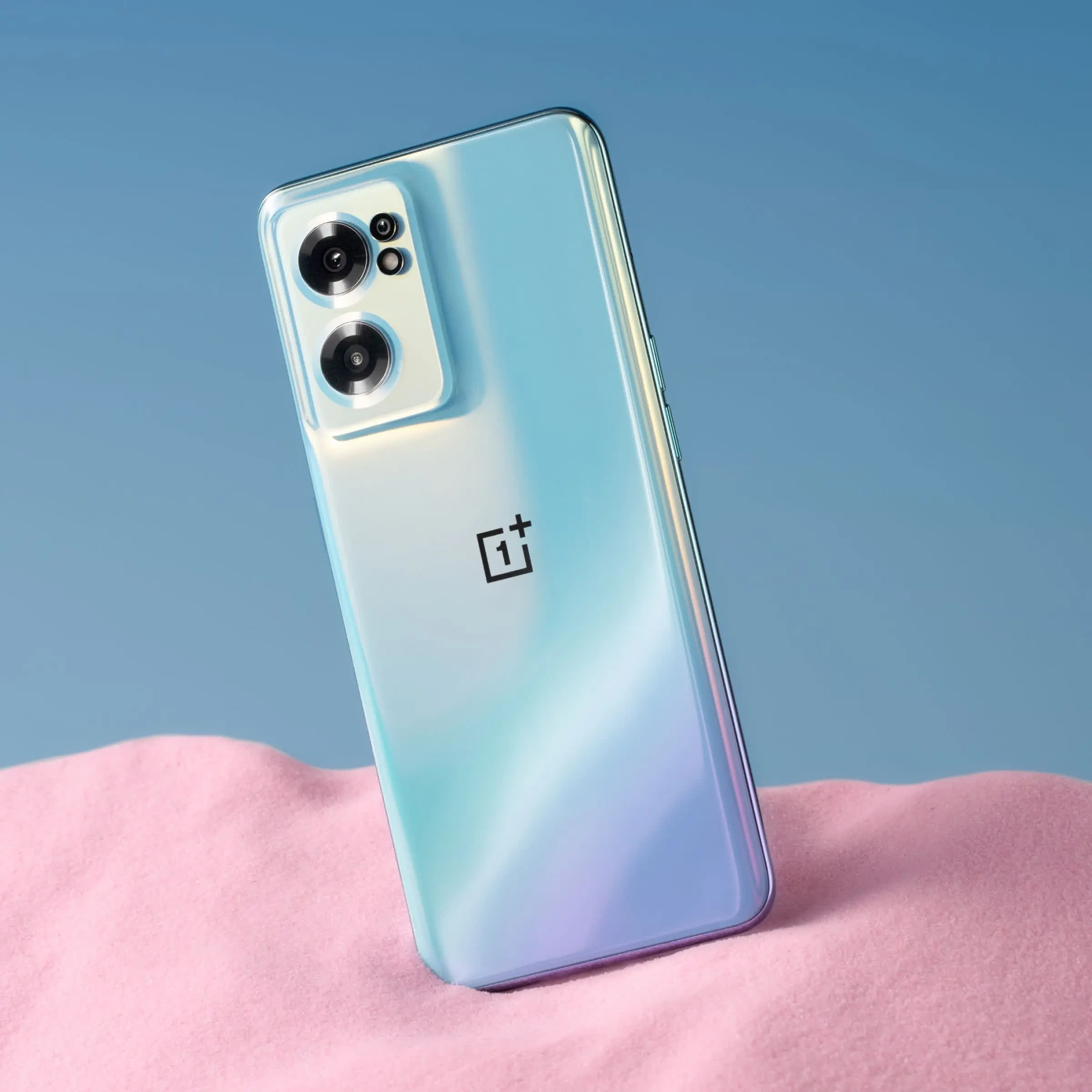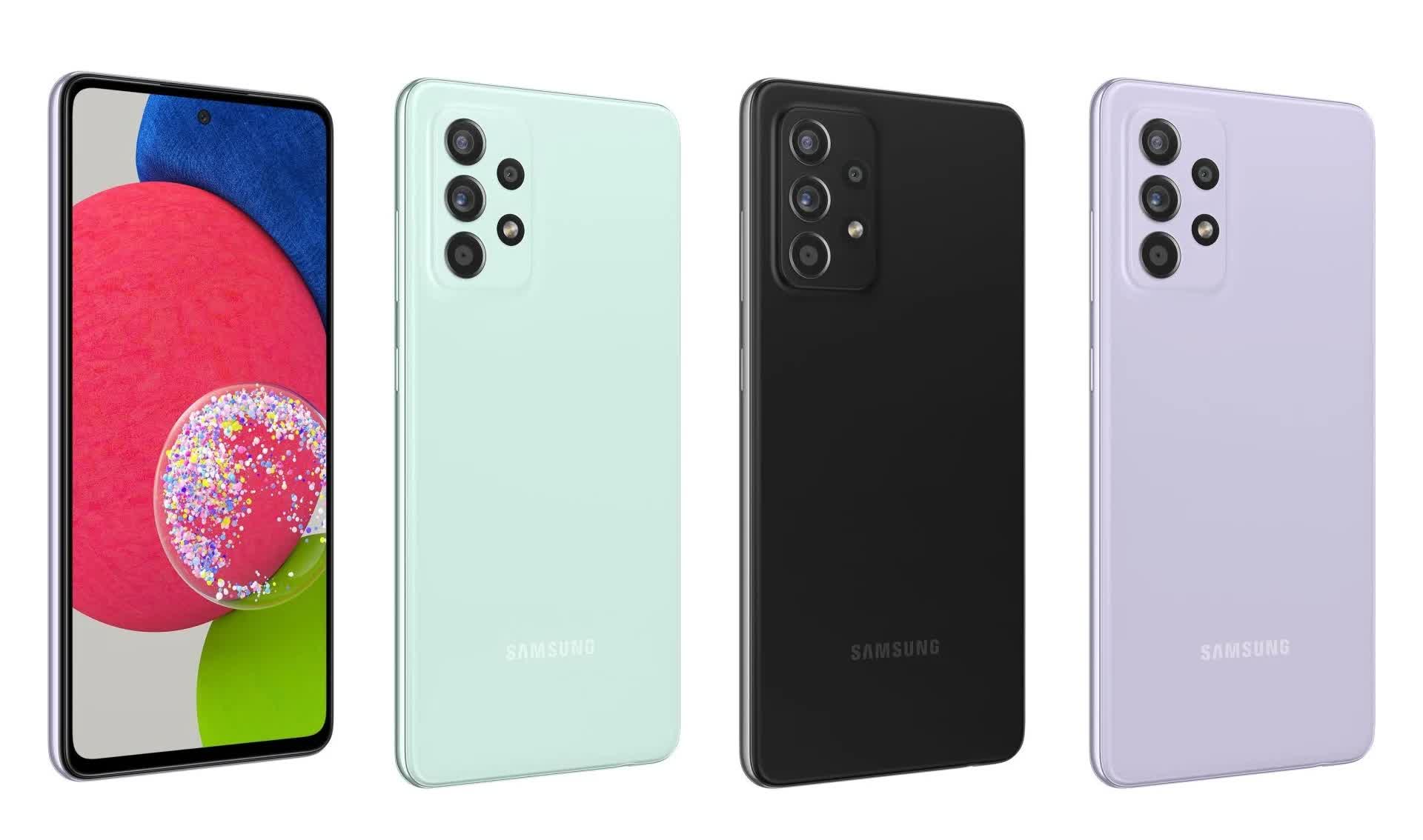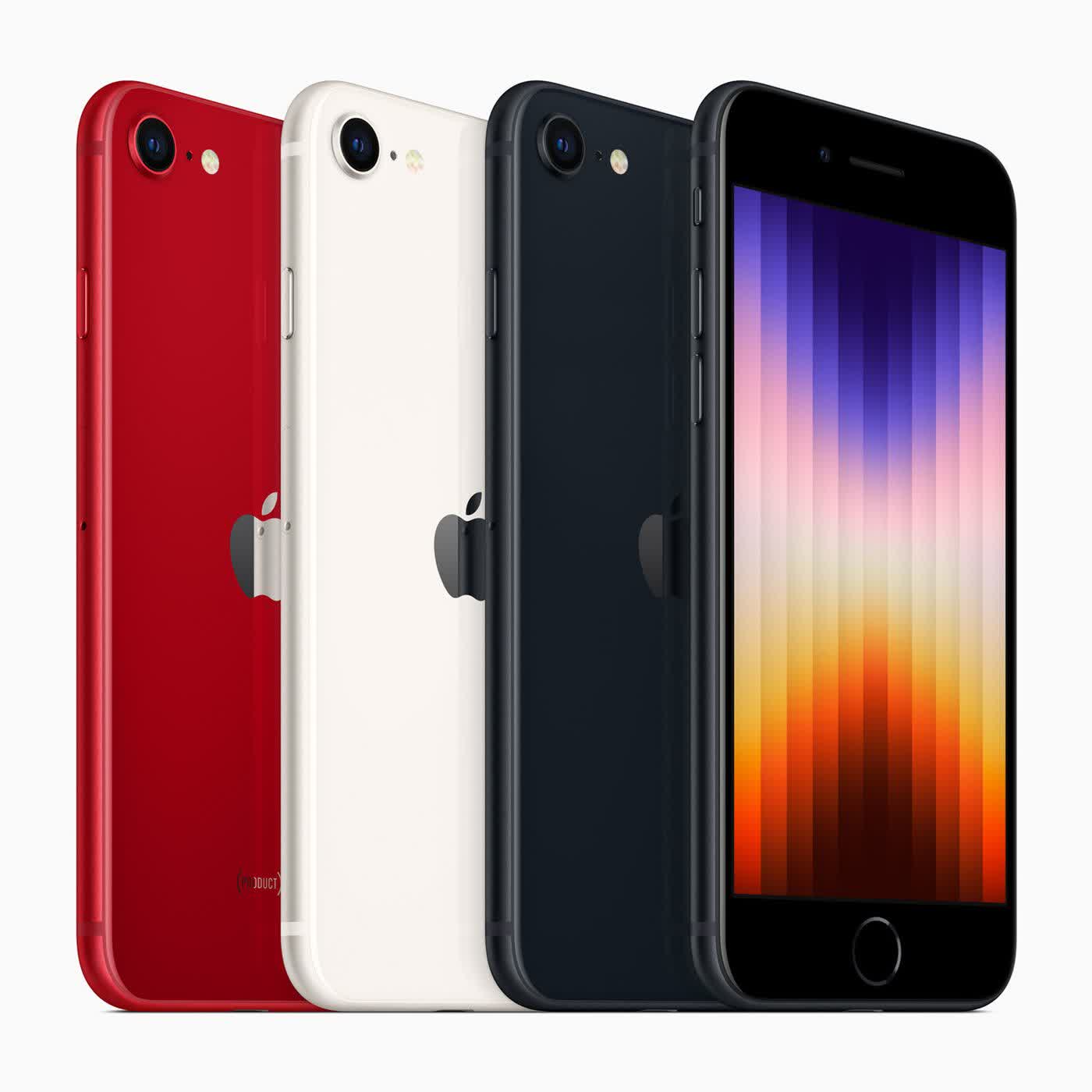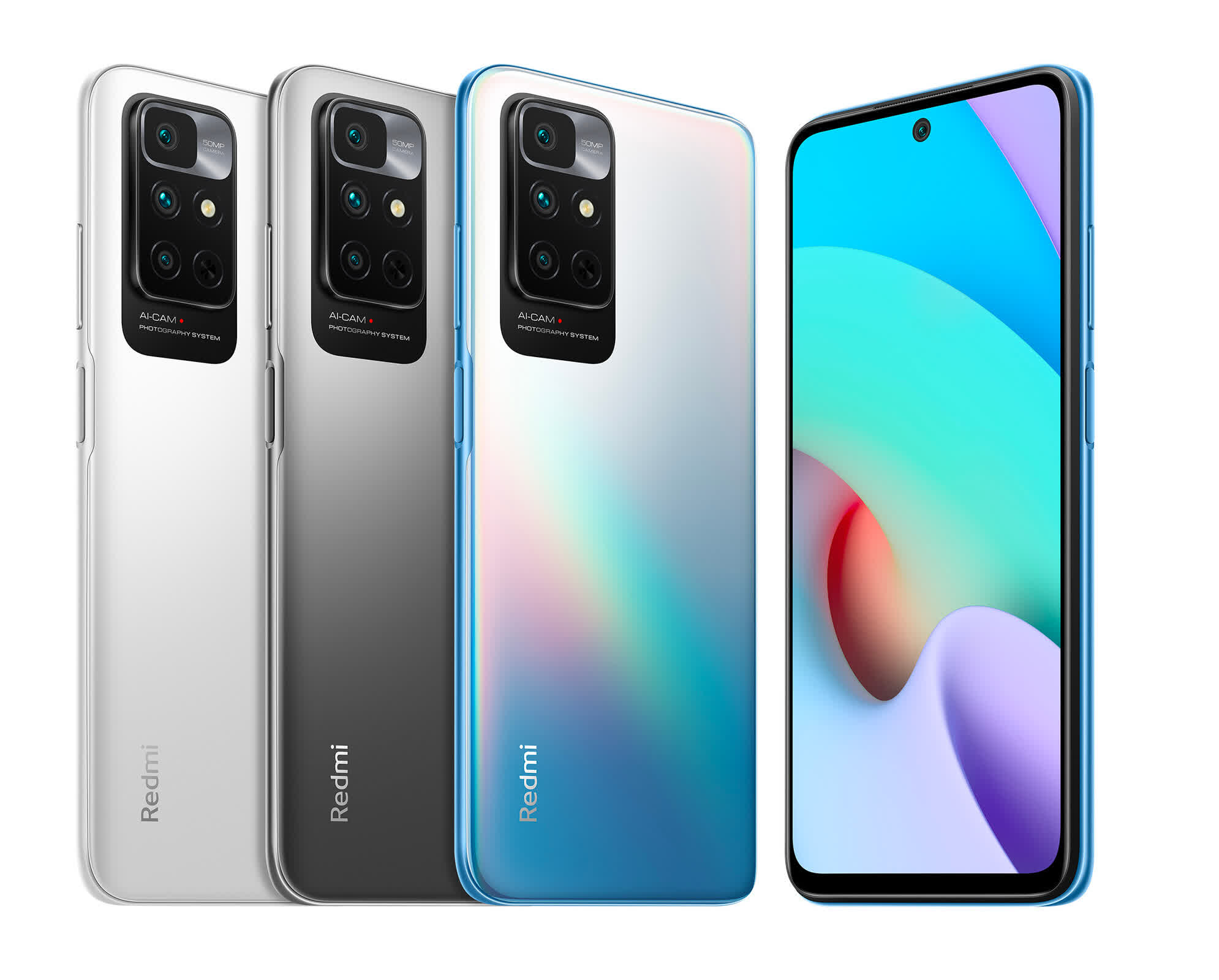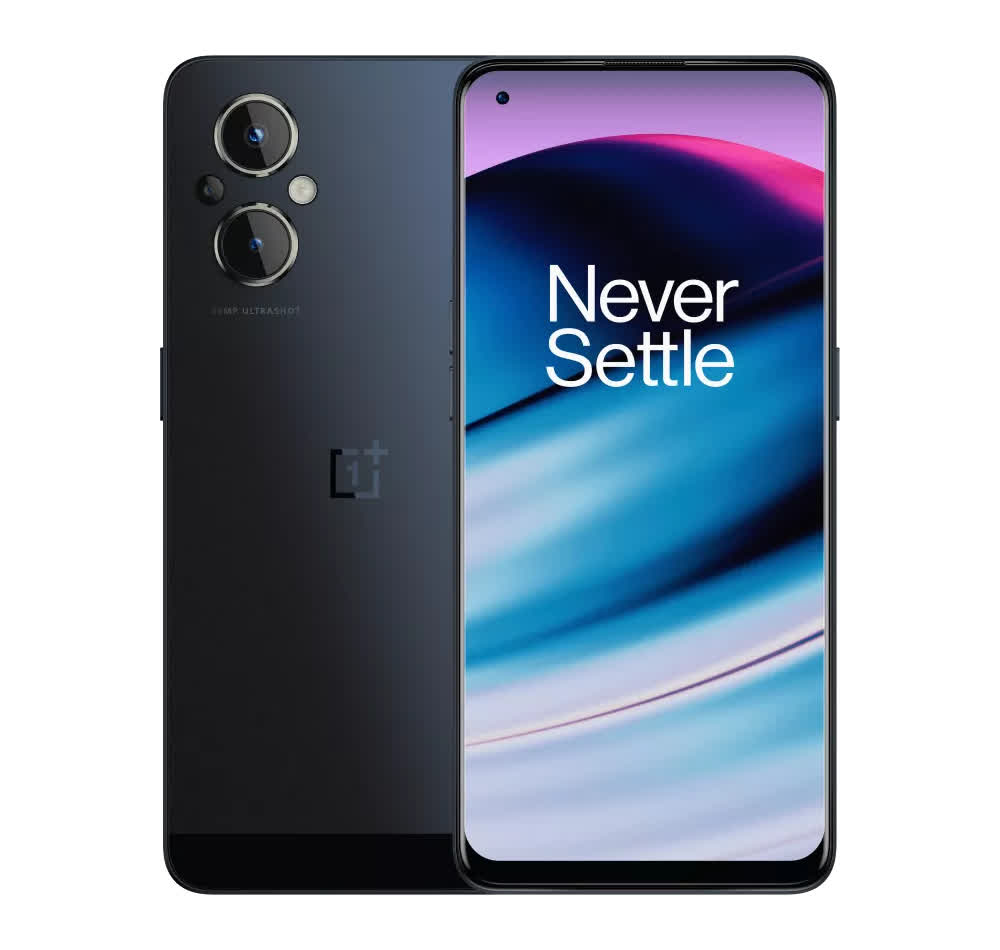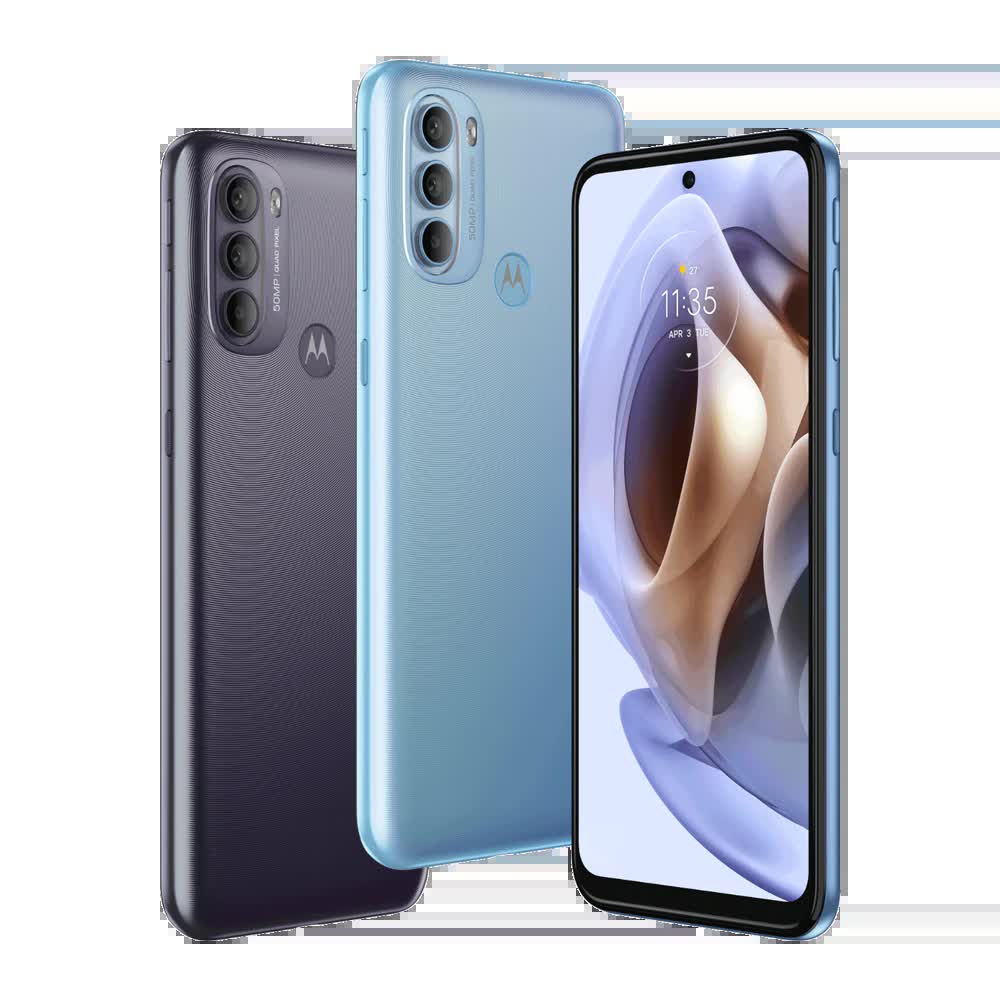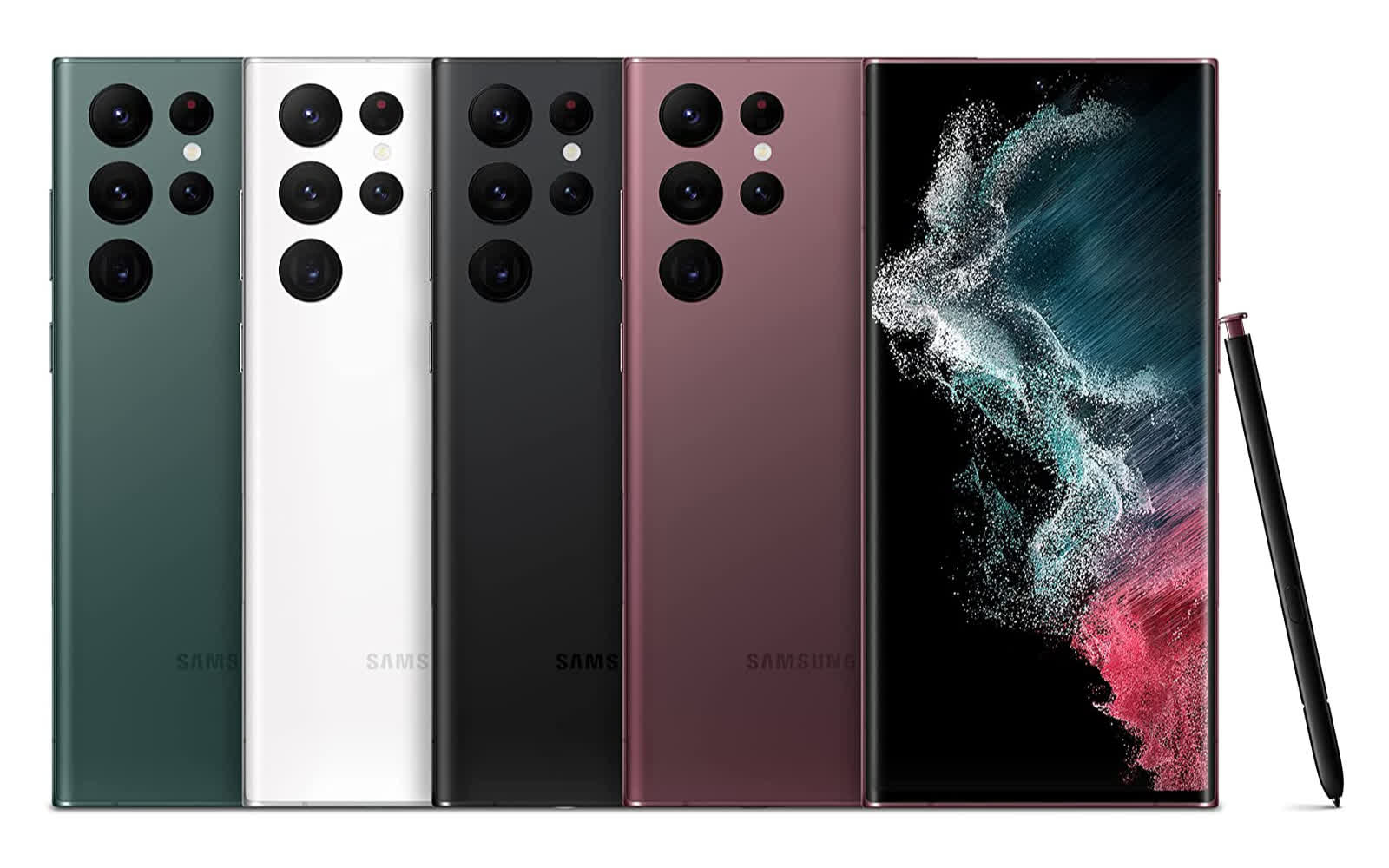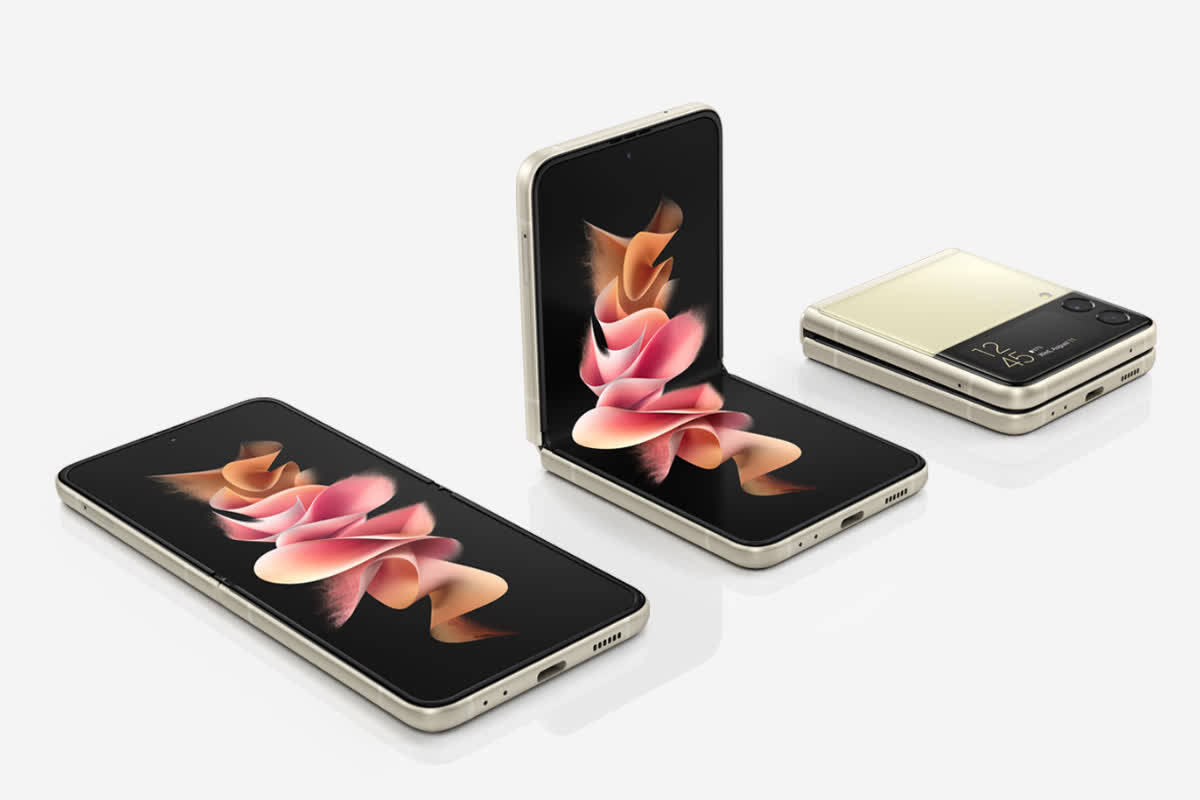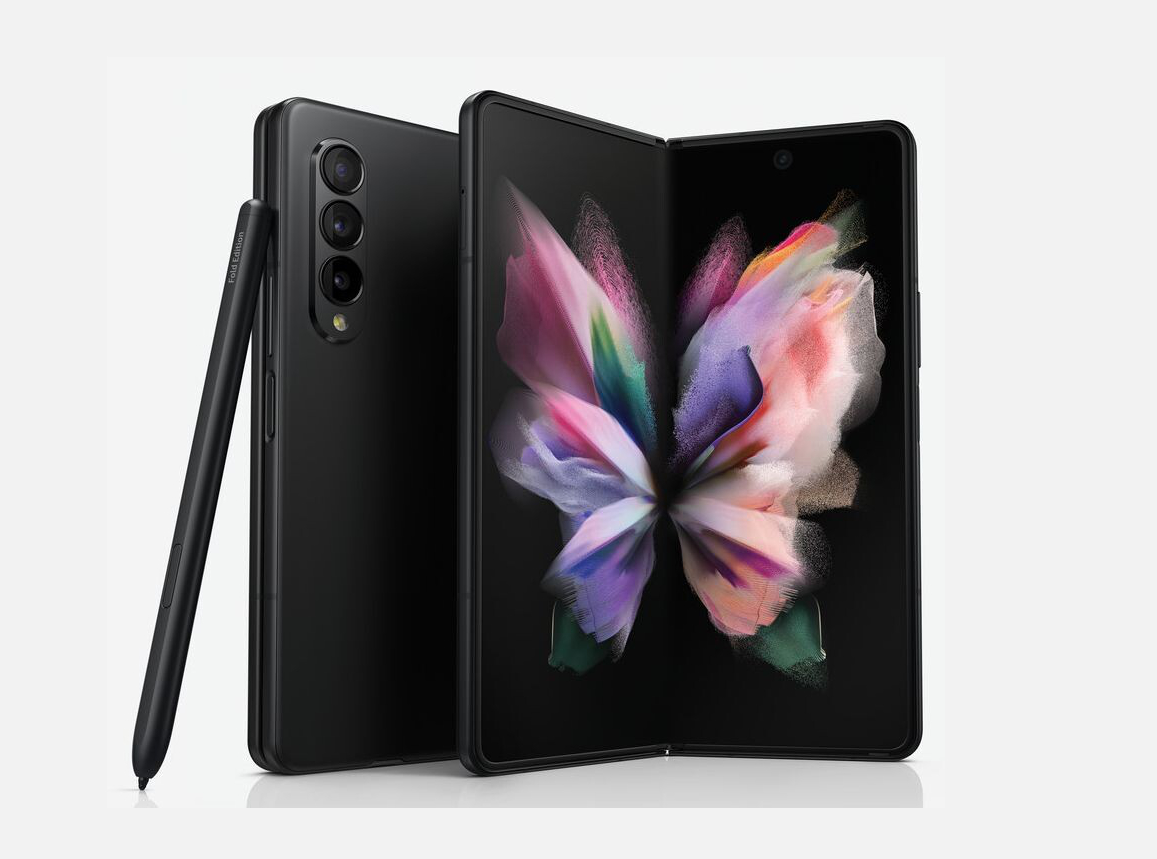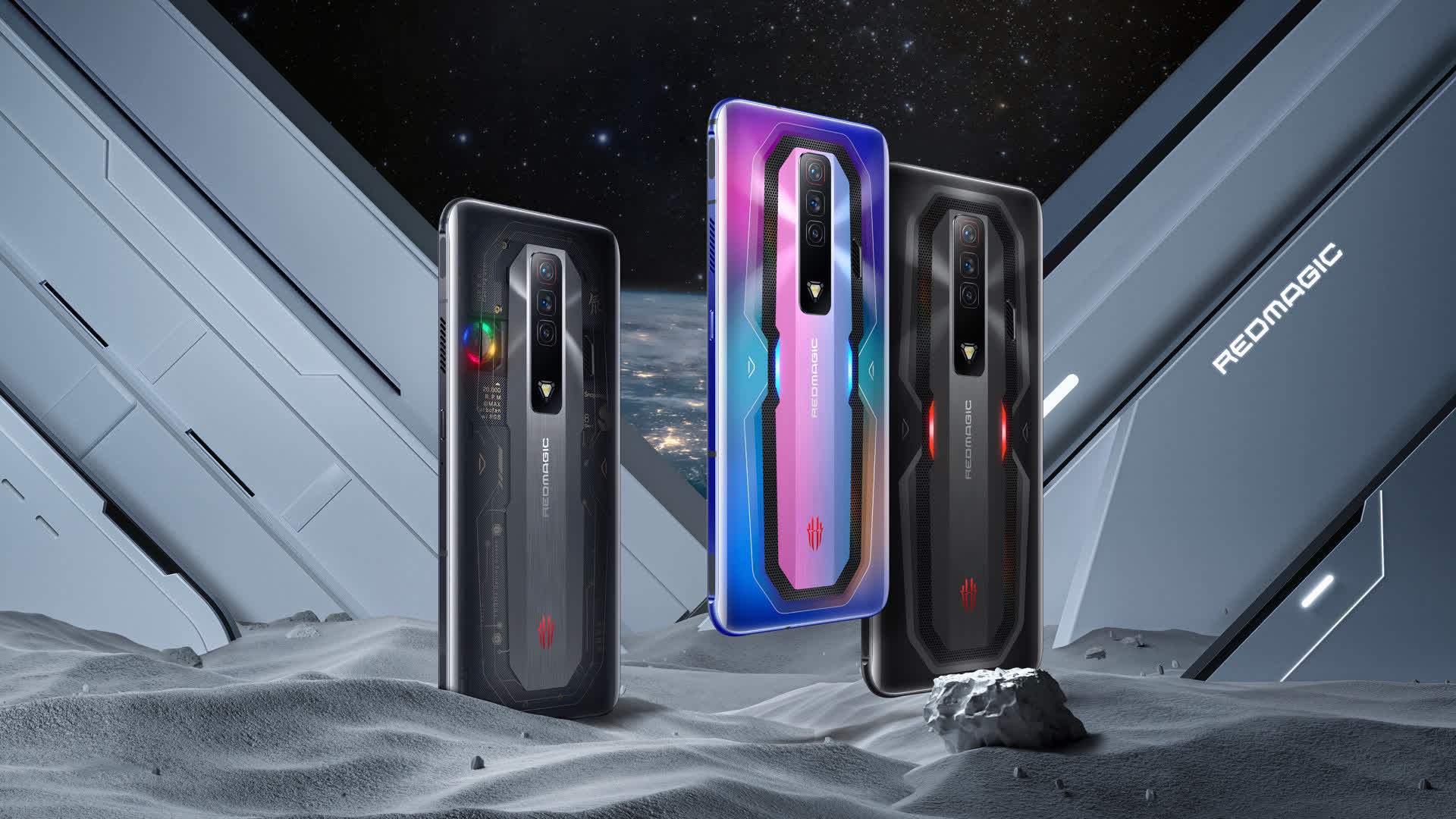See our latest update: The Best Phones for Every Price Range
There are multiple factors to consider when buying a new phone, but for most people the crucial elements are choice of OS and price. Are you willing to shell out over a grand on the latest and greatest phone, or will a $350 mid-range champion suffice? Perhaps try a foldable if you've gotten bored with traditional candy bar designs, or check out our new gaming phone category if hardcore mobile gaming is your thing.
To help you navigate the multitude of phone options and help in your decision, we've collected and organized our top picks into six categories, based on features, value and price...
Masthead credit: Jeremy Bezanger
- Best for Most
- Best Value Phones
- Best Budget Phones
- Best of the Best
- Best Foldable
- Best Gaming Phones
Best for Most People
Apple iPhone 13 or Samsung Galaxy S22

Recommending an $800 phone as the best choice for most people seems far from ideal, but when you look at how Apple has evolved the iPhone into a complete, refined package over the years, things fall more easily into place for the admittedly expensive iPhone 13. Considering how phones are an essential tool for most people on their everyday lives, the wealth of features and capabilities on offer with this iPhone means we feel the expense can be justified.
This is Apple's latest mainstream model which continues to lead the way in terms of silicon performance, plus it now breezes through day-to-day apps and tasks for longer thanks to a bigger battery. Its dual camera system might not have the highest pixel or sensor count, but for overall consistency and effortlessness when it comes to point-and-shoot photography and video, the iPhone 13 is still ahead of the competition.
You'll also be able to keep most of your media onboard, thanks to the base model upgrade to 128GB of storage, giving new adopters and older iPhone users one less reason to jump ship to cheaper and similarly capacious Android alternatives.
Another hardware aspect where the iPhone still lags behind, particularly this regular model, is the display. While a smaller notch is an improvement over the iPhone 12, it combines with a slow 60Hz refresh rate of the 6.1-inch display for a middling viewing experience, especially when compared to Android flagships. Unlocking the fluidity of iOS means that, for now, buyers are forced to spend even more for the 120Hz screen of the iPhone 13 Pro.
You still need a lightning cable for faster, wired charging even when Apple's own iPad lineup made the transition to USB-C years ago. We could see the first official USB-C iPhone arriving next year, but that's far from comforting at this point. Also, removing the charger from the box becomes hard to justify as an eco-friendly measure from Apple's perspective.
While Apple's move also caused rivals to begin shipping charger-less boxes with flagship phones, a positive trend it did inspire in the industry is long-term software support. A strong ecosystem with years of iOS updates makes iPhones retain their value for longer. This also helps when it's time for an upgrade, as you can simply pass down your iPhone to another family member or sell it in the second-hand market for a solid price.
Samsung Galaxy S22
The Galaxy S-series' overwhelming feature set and competitive price tag have always helped Samsung standout from the competition. The S22 pushes this premise further, with an elegant, unique design and possibly the best software support in the Android space. Four years of major OS releases and five years of security updates address a long-standing concern of Android users increasingly left behind and out of the platform's latest bells and whistles.
Unless you're upgrading from a phone over three years old, it's becoming increasingly hard to justify annual model upgrades. The $799 Galaxy S22 is a phone worth upgrading to, since it comes with all the hardware and software that should easily see you through 2025 and beyond.
Powerful Snapdragon 8 Gen 1 SoC with 8GB RAM and a crisp 6.1-inch 120Hz AMOLED display keep Samsung's One UI Android skin running smoothly. And while it's not like the compact phones we used to have, the overall dimensions and rounded edges do make one-handed operation easier. If you've got big hands, deeper pockets and don't mind spending $100 more, the S22+ variant is worth considering for the bigger battery, display, faster 45W wired charging and better connectivity with Wi-Fi 6E and ultra-wideband support.
The Galaxy S22's triple-camera system, while not exactly iPhone or Pixel-beating, is still a capable unit. Gone is the 12MP primary lens, replaced by a new 50MP sensor so you get more detail and better light in day and nighttime photos. The main lens is paired with a 12MP ultrawide and a 10MP telephoto sensor, the latter being a downgrade from the S21's 64MP unit. However, it does offer 3x optical zoom for a more versatile experience.
Samsung's One UI Android skin is packed with features like edge panel, widget stacking, and smart calendar. Based on Android 12, users get to experience Google's newer Material You design language and customizability, and can also take the experience to the desktop with Samsung Dex support. Combine these features with the aforementioned software support, and the Galaxy S22 becomes an easy phone to recommend to most people.
Rivals like the OnePlus 10 Pro, Google Pixel 6 and Xiaomi Mi series push and redefine the limits of an Android flagship in their own way. However, Samsung's well-matured offering has fewer glaring weaknesses than the competition, making it the most compelling option overall.
Best Value Phones
Xiaomi Poco F3... or OnePlus, Samsung, Apple
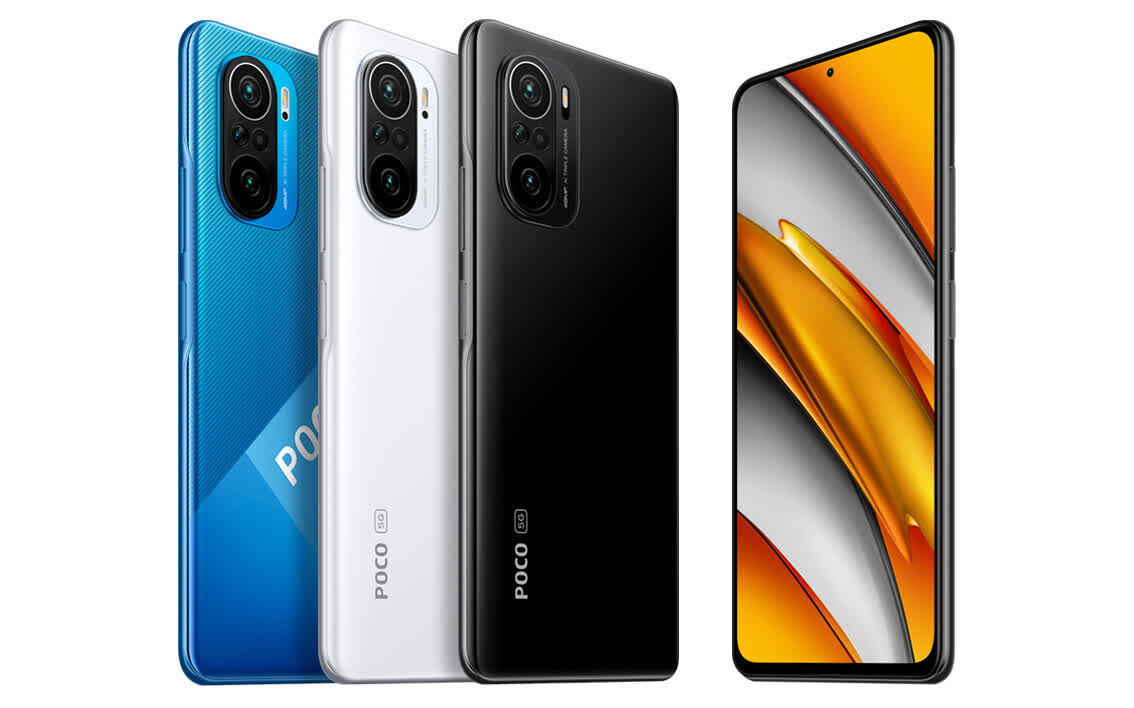
Xiaomi flagships are stuffed with powerful hardware, but you don't need to pay flagship money when the company's mid-range and budget offerings also pack enough high-end features to make them amazing bargains. The Poco F3 is one of these models, which despite being over a year old, is still a tempting 5G phone for $300. Xiaomi recently released a higher-end GT variant of its successor, but the regular F4 is yet to be announced.
Powering the Poco F3 is Qualcomm's SD 870 5G SoC, that's paired with 6GB RAM and 128GB of storage. These specs, along with Android 11-based MIUI shine on a big and bright 120Hz 6.67-inch 1080p AMOLED display inside a well-built, well-designed glass and plastic body. The Poco F3's triple-camera array is big on megapixel count, though expect to see decent results (and not much else) from its 48MP primary shooter.
It comes with a chunky 4,520mAh battery with 33W fast charging support, so you'll be charging it less often. A microSD slot and 3.5mm jack are perhaps the only notable omissions, which can be found on all of our remaining budget picks. Nevertheless, there are other niceties that make up for these two, such as stereo speakers, a side-mounted fingerprint sensor and an IR blaster.
For the price, the Poco F3 offers an outstanding display for content consumption, long battery life and solid build quality. Xiaomi's highly customizable MIUI skin can be a bit quirky at times, but the company does offer decent software support, which means you'll get up to Android 13 and monthly or quarterly security patches till 2024.
OnePlus Nord CE 2 5G
OnePlus mid-rangers have increasingly become more exciting than the company's flagships, since they align more with OnePlus original philosophy of delivering the best bang for buck. That's why the Nord series has seen a rapid expansion in the past few years, with the Nord CE 2 5G being the best value OnePlus currently available.
The 2022 model is essentially an Oppo Reno 7 dressed in a slightly different design and OnePlus branding, but don't let that put you off. Underneath its sleek 7.8mm clean-looking shell is a capable Dimensity 900 SoC with 6GB of RAM that runs Oxygen OS 11 on a smooth and sharp 6.4-inch 90Hz AMOLED display. Although OnePlus' iconic alert slider is absent, this model adds microSD expansion over the original Nord CE and retains the 3.5mm jack.
The Nord's triple-camera system performs admirably for a mid-ranger, especially the primary 64MP wide lens. While it matches the aforementioned Samsung rival in terms of battery capacity, the 4,500mAh unit in the Nord CE 2 supports reverse charging as well as much faster 65W SuperVOOC charging, with OnePlus being generous enough to include the adapter in the box.
In terms of software and security support, OnePlus lags behind Samsung. The 2022 Nord CE 2 is expected to get just two major OS updates (up to Android 13) alongside three years of security support. Although another year would have greatly added to its value proposition, the mid-range price point of this accomplished all-rounder will make upgrading easier when the need eventually arises.
Samsung Galaxy A52s 5G
Phone shoppers looking to get the best value out of their next purchase should consider the Galaxy A52s 5G. In some ways, this mid-ranger is even better than its successor, the A53 5G. Not only does the older A52s have nearly identical specs in terms of display, cameras and memory/storage, it powers these components with a superior Qualcomm chip instead of Samsung's own Exynos SoC used in the newer model, and includes the ever-useful 3.5mm audio jack.
For just over $300, buyers get 5G connectivity, a sharp 6.5-inch 120Hz AMOLED display, 64MP triple-camera array and 4GB/128GB of storage (base model) with microSD expansion.
The 4,500mAh battery will easily last through a day of moderate use, though it will take a few hours to charge with the provided 15W adapter. The phone also supports faster 25W wired charging, so users can address the issue by getting a more powerful adapter.
Being an older model, the 2021 Galaxy A52s ships with Android 11 out of the box and will consequently see less software support down the line. Three more years of major OS updates mean that this phone will be eligible for Android 14, while four years of security support will have you receiving monthly patches till 2025.
Apple iPhone SE 2022
In several good and bad ways, the iPhone SE 2022 offers what no other phone on this list can do. A truly compact, yet powerful package with 5G connectivity (sub-6GHz) for $429 that not only outclasses similarly priced competition with ease but will even give expensive Android flagships a run for their money. On the other hand, you won't find such a dated display and bezel-heavy design on a $400+ phone.
The iPhone SE 2022 uses the same A15 Bionic chip as the iPhone 13, which means blazing iOS performance and industry-leading software support. The single-lens 12MP camera with OIS, while not as versatile as dual or triple-lens systems, is still a solid performer. What's disappointing, is that you'll be experiencing this hardware, and all other features, on a sub-par 4.7-inch 750p 60Hz display. The inclusion of big bezels, top and bottom, don't help either. Perhaps the only thing going for it here is the return of the iconic Home button with Touch ID, which some Apple users still prefer (and miss) over Face ID.
Due to its smaller size, the iPhone SE 2022 also suffers in terms of battery life. Despite its efficient SoC and software, the 2,018mAh battery is nearly half the capacity of what mid-range Android rivals are packing these days, so expect to charge it regularly overnight (more so with 5G enabled).
If you really want a compact phone that will last you for years, the iPhone SE 2022 with all its compromises is still the best bet for now. It is also the most affordable way to experience iOS, since the modern-looking iPhone 12 Mini ($599) and 13 Mini ($699) are too expensive for what they offer.
Best Budget Phones
Xiaomi Redmi Note 11 or OnePlus Nord N20 5G
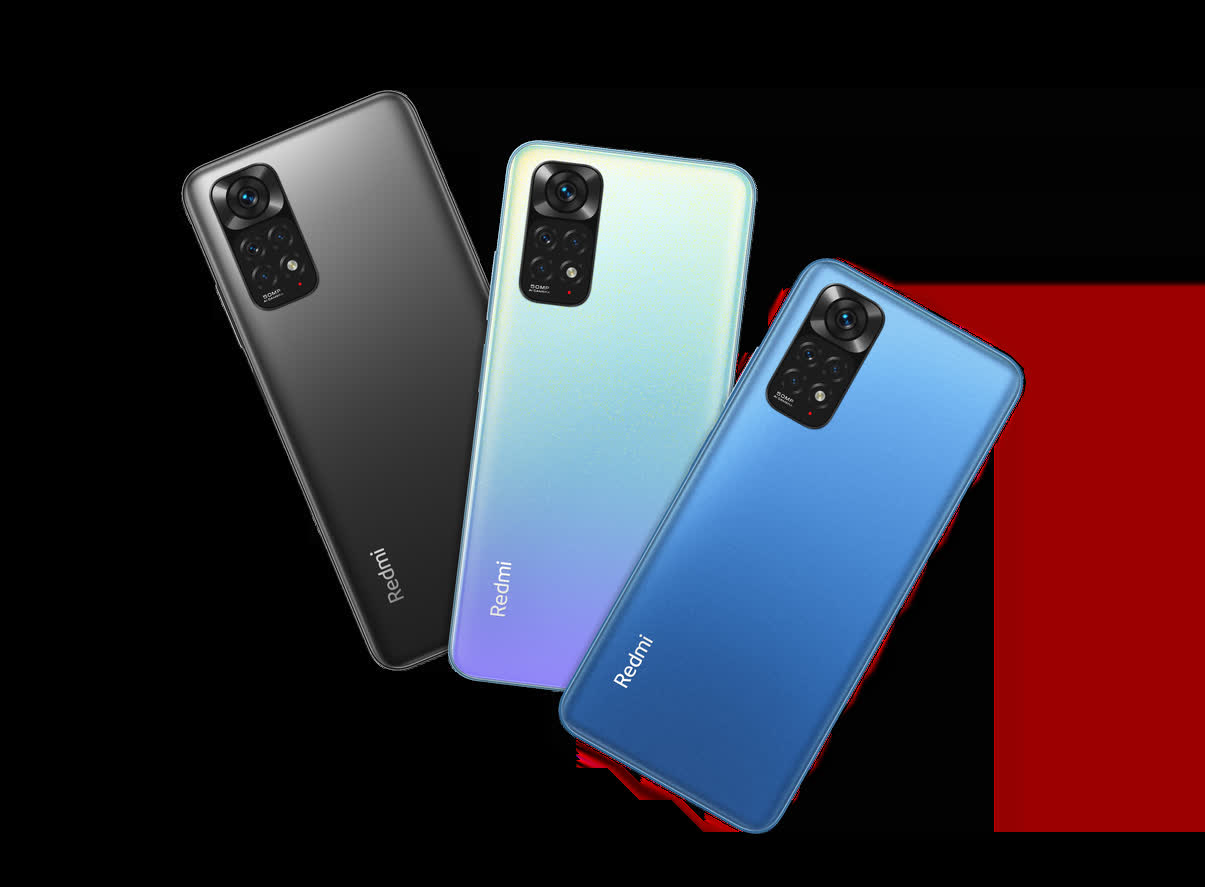
The Redmi Note 11 is an excellent budget choice considering the specs and features you get for just $188. A fluid 90Hz 1080p 6.43-inch AMOLED display is powered by a Qualcomm SD 680 4G SoC, with either 4GB or 6GB RAM and 64GB/128GB of microSD expandable storage.
The Redmi Note 11's quad-camera setup with a 50MP main shooter is a versatile package at this price point, though your expectations should be kept in check. Xiaomi has made sure to tick off the essentials and throw in some niceties as well to make it an easy pick for budget buyers. These include stereo speakers, a 3.5mm jack, an IR blaster and a big long-lasting 5,000mAh battery that supports 33W fast charging.
You won't get 5G connectivity, but that's acceptable at this price. The Redmi Note 11 also benefits from Xiaomi's tweaked long-term software update policy.
Its Android 11-based MIUI OS will receive three major OS updates, and security patches will continue arriving for another four years. Not bad for a $sub-200 Android that'll see official support till 2026, and remain usable for even longer.
OnePlus Nord N20 5G
The Nord N20 5G is a noticeable refresh of the original Nord N10, with changes to the design, display, camera and other internals. The newer model looks much more appealing and uses a higher-end AMOLED screen instead of an LCD. However, this 6.4-inch panel refreshes at a slower 60Hz, which should be perceptible if you've previously interacted with a 90Hz+ device. For US buyers, it's also worth noting that this phone is a T-mobile exclusive for now, with unlocked variants arriving later.
Under the hood is Qualcomm's capable SD 695 5G SoC, paired with 6GB/128GB of microSD expandable storage. These impressive specs are further complemented by a fast in-display optical fingerprint, a 3.5mm headphone jack, and a long-lasting 4,500mAh battery that supports 33W fast charging.
OnePlus also scrapped the quad-lens array of the Nord N10 for a triple-camera system in this model. The newer layout, in addition to being visually appealing, also makes image and video capture less complicated with a 64 MP primary shooter. Budget phones aren't usually expected to go beyond a decent camera experience, and the Nord N20 offers just that.
Out of the box, it ships with the older Android 11-based OxygenOS, which is disappointing as OnePlus won't be updating this Nord beyond Android 12. However, security updates will keep on coming for the next three years, so your good-looking, 5G budget Android should be perfectly usable and safe till at least 2025.
Motorola G31
Motorola has an array of G-branded budget and mid-ranger phones, and for those looking to keep things basic and simple, the $200 G31 is a solid choice. You get a big 6.4-inch 1080p AMOLED display with an octa-core MediaTek chip running the show, alongside a 4GB/64GB storage configuration.
Like our other budget recommendations, the Moto G31 also supports microSD expansion and includes a 3.5mm jack. You get a side-mounted fingerprint scanner for biometrics, a triple-camera setup with a 50MP main sensor, and a water-repellent design that's the second-best thing to an official IP rating.
There's also a chunky 5,000mAh battery with 20W fast charging support. Being a budget device, Motorola offers just one major OS update and 2 years of security support. This means your Moto will get up to Android 12 and remain patched up till the end of 2023.
Best of the Best
Apple iPhone 13 Pro Max or Samsung Galaxy S22 Ultra

Apple designs the regular iPhone to have the broadest appeal. That's why the iPhone 13 was the best-selling model in Apple's most recent quarter, accounting for 38 percent of all iPhone 13 models sold. However, the 13 Pro Max, Apple's fully-loaded and most expensive iPhone came in second, which is even more remarkable and shows that a large number of people are willing to spend four figure sums for Apple's biggest and best iPhone.
Apple finally let users experience iOS on a 120Hz OLED display with this Pro-series iteration, and the 13 Pro Max does it best with a huge and bright 6.7-inch screen. It also helps that the notch has gotten smaller, and that the latest Pro Max is now thicker and heavier due to a noticeably bigger 4352mAh battery that adds a couple of hours to the already excellent battery life.
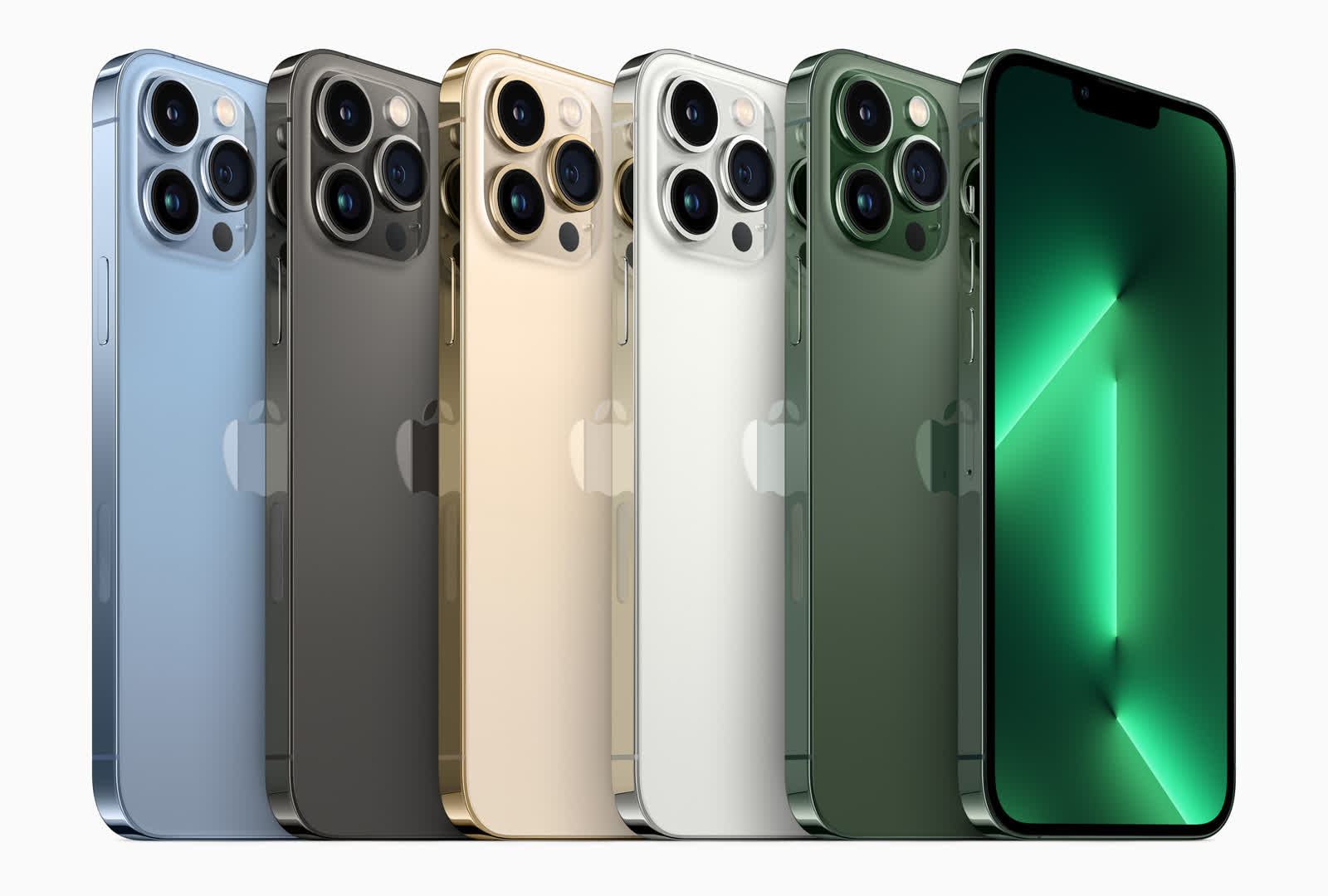
Apart from the latest, industry leading A15 Bionic SoC, Apple's 12MP triple-camera system has also been upgraded with newer optics, including a bigger sensor, faster aperture speed, better 3x zoom capability and support for ProRes video. There's now also a (very expensive) 1TB version that lets you store more of that footage.
The iPhone 13 Pro Max with Apple's long-term software support is currently the best super-pricey phone that will probably last you till the end of this decade, provided you service the battery every now and then.
Samsung Galaxy S22 Ultra
The Galaxy S22 Ultra is even more expensive than the iPhone 13 Pro Max, but it combines the premium stylus experience of the now-defunct Note series with all of Samsung's bells and whistles inside a huge glass and aluminum body. It's essentially a 2022 Galaxy Note under a different name.
Samsung has given it a more distinctive look than the bigger S22+ variant, with square sides, a slot for the S Pen, and an insane 108MP quad-camera system whose lenses sit flush with the design. The improved 8K-capable optics now offer better low-light photography, while carrying over the 40MP selfie unit from the older model.
Under the hood is Qualcomm's flagship SD 8 Gen 1 (EU gets Exynos 2200 SoC), which powers a super bright 6.8-inch QHD 120Hz AMOLED screen. Unlike the S21 Ultra, Samsung has downgraded the RAM on the base model from 12GB to 8GB, but also added a 12GB/1TB storage variant in the process. Larger internal capacity means you probably won't miss the lack of microSD expansion, but it is disappointing nonetheless that Samsung Notes of yesteryear used to come with this feature, and the 3.5mm jack.
The S22 Ultra's 5,000mAh battery capacity remains the same as before, but now supports 45W fast charging, in addition to 15W wireless and 4.5W reverse wireless charging. In terms of software, you get Android 12-based One UI 4.1 out of the box that offers over a dozen of S Pen features such as Air Actions, Screen Write, Smart Select, Translate, Magnify, Glance, and more. Like the standard S22, the Ultra is also Samsung Dex-capable, allowing you to take the Android experience to an external monitor and control it wirelessly with a mouse/keyboard.
All these goodies, and Samsung's long-term software support of 4-year OS and 5-year security updates make the eye-watering $1,200 price tag somewhat easier to justify. You'll also end up with the best, most capable Android flagship currently available.
Best Foldable
Samsung Galaxy Z Flip 3

The Galaxy Z Flip 3 has arguably made the strongest case for foldables, yet. While still not popular as candy bar designs, Samsung's years of trying and innovating has finally given us a pocket-friendly foldable that doesn't look and feel like an experiment, and also isn't outrageously expensive.
The Z Flip 3's main display is a 6.7-inch 120Hz 1080p AMOLED, powered by the SD 888 5G SoC and Android 11. Paired with 8GB/128GB of memory and storage on the base model and a capable dual-camera system, the Z Flip 3's only minor weakness is middling battery life.
The novel form factor means that Samsung could only fit a 3,300mAh unit inside the Z Flip 3, so you'll definitely need a plug or wireless charging source after a day of moderate use. And while the design is officially water-resistant (IPX8), the lack of dust protection asks for a little extra care. You'll also have to put up with the display crease that can still become noticeable while scrolling content or viewing it in direct sunlight.
Samsung will likely address these shortcomings with the upcoming Z Flip 4 that's expected to launch in August. Waiting a few months for a potentially faster, sturdier and overall improved Z Flip seems like a better option when you're spending upwards of $800. However, if you really want a pocket-friendly foldable right now, then the Z Flip 3 is your best bet.
Alternative: Samsung Galaxy Z Fold 3
The Galaxy Z Fold 3 and the competition it has inspired (Oppo Find N, Huawei Mate Xs) do form and function equally well. They are, however, bulkier to carry around and the wealth of multitasking features and capabilities mean that you'll be paying a lot of money for the privilege.
Like the Z Flip 3, the Z Fold 3 uses 2021 flagship hardware inside, but is also available in 12GB/512GB spec. Dual 120Hz AMOLED displays power truly unleash the power of Samsung's S-Pen, while also showcasing features like Multi-Active Window and Flex mode.
The Z Fold 3's IPX8 water resistant design has an overall bigger profile that allows for a larger 4,400mAh battery. With all the powerful hardware inside, don't expect stellar multi-day battery life out of the Z Fold 3, as moderate use will have you charging it at the end of the day.
$1,400 is a lot of money for a phone, but then the Z Fold 3 is admittedly a lot of hardware. If you've got really deep pockets, an itch to try out something different and/or truly need a stylus-capable, multitasking device on the go, then the Galaxy Z Fold 3 is worth it. Perhaps less so when you consider that a successor will likely be arriving in late August.
Best for Gaming
Asus ROG Phone 5s or ZTE Nubia Red Magic 7
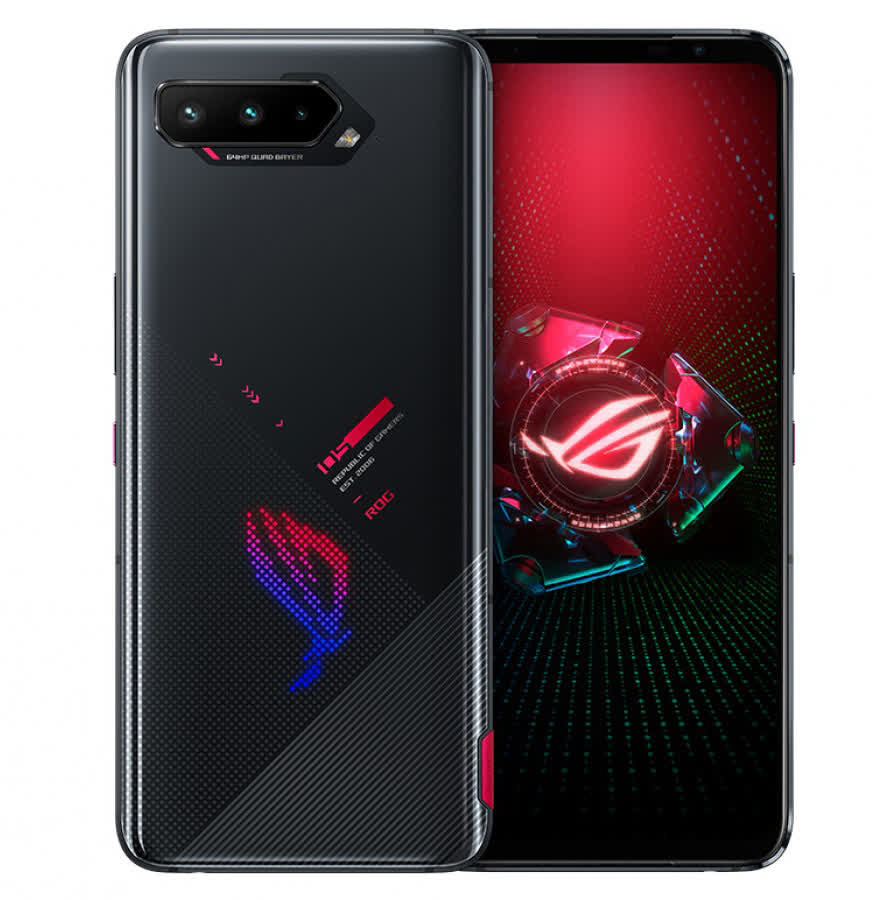
The idea of playing games on mobile may not seem enthralling at first, but when you look at the global gaming industry figures, smartphones continue to be the preferred platform choice over PCs and consoles for developers and consumers. It's why the most popular cross-platform gaming titles like Minecraft, Genshin Impact, Fortnite, PUBG, CoD, and more recently Apex Legends, are now just finger taps away.
While casual games don't require powerful hardware, you will need a capable phone to play competitive titles. Nearly all of our high-end picks on this list with a 90Hz or preferably 120Hz display will have you on the top of leaderboards (being skilled also helps), but if you want the ultimate mobile gaming experience, then outlandish devices like the Asus ROG phone and ZTE's Nubia Red Magic 7 are worth considering. It's a niche category of hardware, but an interesting one at that...
Asus ROG Phone 5s
Customizable RGB lighting, dual USB-C ports, punchy stereo speakers and pressure sensitive zones are a good indication of Asus going the extra mile to make the ROG Phone 5s stand out as a formidable on-the-go gaming device. This model uses Qualcomm's 2021 flagship SoC, the SD 888+ 5G, and pairs it with either reasonable amounts of RAM (8GB) or insane amounts (12GB, 16GB or 18GB). The non-expandable storage, meanwhile, ranges between 128GB and 512GB.
Asus' ROG UI skin and its gaming-focused features like the Game Genie overlay, Aura RGB and ROG Connect are brought to life by a huge 6.78-inch 144Hz 1080p AMOLED display and a chunky 6,000mAh battery. In addition to supporting 65W fast charging, the ROG Phone 5s has an extra side-mounted USB-C port for charging so the cable stays out of your way during extended gaming sessions.
To keep thermals in check, Asus also offers the AeroActive Cooler 5 accessory. This clip-on fan blows in cold air to the phone's rear, while an extra pair of adjacent physical buttons add a new layer of control to games. While photography/video isn't this phone's premise, a 64MP triple-lens system is present nonetheless, offering a decent camera experience with 8K video capture, and a 24MP selfie shooter for livestreaming.
Asus is now years into the ROG Phone series, but the maker has yet to figure out a way of offering an IP rating. This means you'll need to put on a sturdy case and protect your ROG Phone from dust and water splashes. With the 16GB/256GB RAM variant currently going for $770 (lower configurations are cheaper), you get all the performance and connectivity of similarly priced Android flagships, plus Asus' gaming-focused features and bold aesthetic.
However, the company's track record in terms of software support isn't reassuring, with older devices getting just two years of OS updates. Despite the ROG Phone's hardware being powerful enough for many years to come, it will be running outdated software a bit sooner than most similar flagships. It's a factor to keep in mind if you value long-term software support as much as mobile gaming.
ZTE Nubia Red Magic 7
The Red Magic 7 from ZTE sports an even faster 165Hz 1080P AMOLED display and uses the newer Snapdragon 8 Gen 1 SoC. It also comes in absurdly powerful variants like its Asus rival, ranging from an 8GB/128GB base model to a 16GB/512GB top-spec version. The Red Magic 7 also has a Pro variant, which packs similar internals but comes with a 16MP under-display camera for added immersion, but a slightly lower 120Hz panel.
With sharp accents all around its thick semi-transparent frame, a built-in 20,000RPM RGB cooling fan and pressure sensitive trigger zones, the Reg Magic 7 is a gaming phone through and through. Its battery life takes a slight toll over older models with a smaller 4,500mAh unit, but there's 65W fast charging support for quickly getting back into the action.
It comes with ZTE's Android 12-based RegMagic OS out of the box, alongside gaming-focused features like Game Space. This comprehensive utility comes with a customized HUD, plugin support and even a game reminder function for truly dedicated players, notifying them of important in-game events.
Like its Asus rival, there's a 64MP triple-lens camera for photos and video, and the lack of any IP rating means the Red Magic 7 will need extra care against dust and water. Another weakness of the Red Magic 7 is ZTE's long-term software support, or rather the lack of it. You're unlikely to get more than a single major OS update, which hurts the phone's overall appeal and keeps it a niche device for dedicated mobile gamers.
